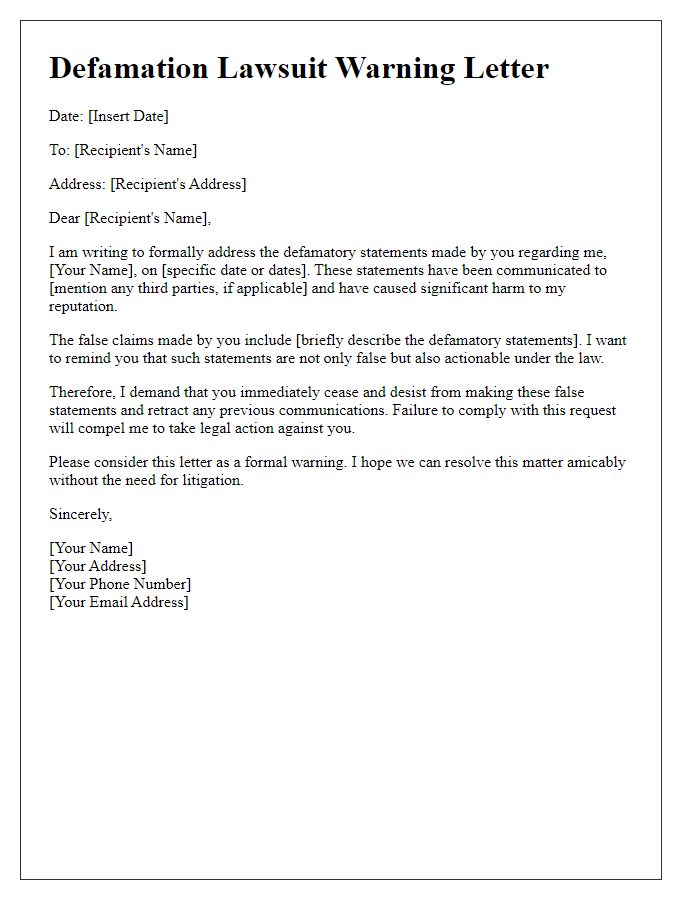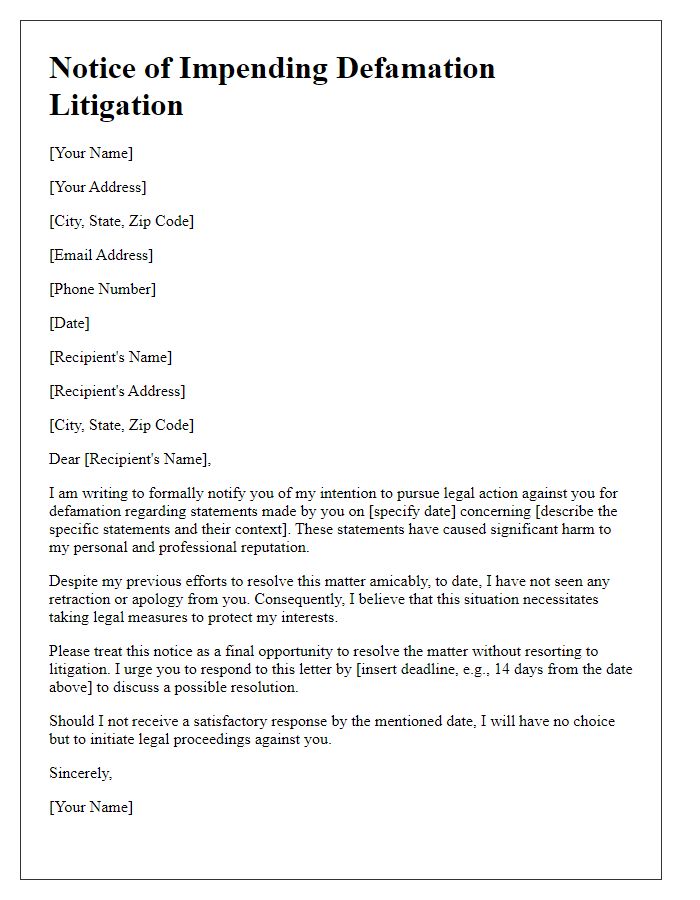Are you concerned about the impact of false statements or damaging rumors on your reputation? It's crucial to take action when someone spreads harmful information about you, as defamation can have serious consequences for your personal and professional life. In our latest article, we'll explore how to effectively draft a defamation lawsuit notice that clearly outlines your grievances and protects your rights. Join us as we guide you through the process and provide valuable insights to help you navigate this challenging situation.

Accurate identification of all parties involved.
In a defamation lawsuit, accurate identification of all parties involved is crucial for establishing liability and jurisdiction. The plaintiff, typically an individual or entity asserting that false statements have harmed their reputation, must provide their full legal name, address, and if applicable, any business identifiers such as a company number. The defendant, also requiring complete identification, includes the individual or organization alleged to have made the defamatory statements, with specific details about their residence or principal office location. Additionally, if applicable, third parties such as witnesses or platforms distributing the defamatory content (e.g., social media sites like Facebook or Twitter) should be listed. Clear dates, such as when the defamatory statements were made and any significant events leading to the lawsuit, should enhance the clarity of all parties involved in the legal action.
Detailed description of the defamatory statement.
The defamatory statement made by the defendant involves a public accusation, claiming that the plaintiff engaged in fraudulent activities related to a financial transaction involving $50,000, which occurred on March 15, 2023. This accusation was disseminated through social media platforms, reaching over 1,000 followers and was further circulated through online comments on various news articles. The statement falsely stated that the plaintiff had misappropriated funds intended for a charitable organization, impacting the plaintiff's reputation and causing significant emotional distress. The misinformation portrayed the plaintiff as deceitful, damaging personal and professional relationships within the community located in Springfield, Missouri. Consequences of this statement have resulted in lost business opportunities and have led to ongoing mental anguish for the plaintiff, necessitating legal action to address these allegations.
Evidence supporting falsity and reputational harm.
A defamation lawsuit notice requires a clear presentation of the evidence illustrating the falsity of defamatory statements and the consequent reputational harm caused to the individual or entity. This notice should include specific instances of false claims, detailed descriptions of the statements made, dates when such statements were published (e.g., January 15, 2023), and the platforms used, such as social media sites (e.g., Twitter or Facebook) or publications (e.g., The Daily News). It should also detail the consequences of these statements, including damage to business relationships, loss of clients (quantified where possible, e.g., "10% reduction in clientele due to loss of trust"), and emotional distress experienced. Additionally, legal precedents such as the case of New York Times v. Sullivan (1964) could be referenced to underscore the importance of proving actual malice in cases involving public figures, which could enhance the legitimacy of the claims made in the lawsuit notice.
Legal basis for the defamation claim.
Legal notifications regarding defamation claims require a meticulous approach to detail and contextual clarity. Defamation, defined as the action of damaging someone's good reputation through false statements, often necessitates legal action under tort law. In jurisdictions such as the United States, elements of defamation include publication (communication to a third party), falsity (the statement being untrue), and fault (negligence or actual malice depending on the plaintiff's status). For example, a public figure must demonstrate actual malice, which is defined as a purposeful falsification or reckless disregard for the truth. Additionally, the notice can encompass specific statements made by the defendant, the context in which they were published, and the resulting harm to the plaintiff's reputation, including any financial damages or loss of professional opportunities. Legal repercussions may involve compensatory damages, punitive damages, and the potential for injunctions against further defamatory statements. The specific legal framework may vary by state or country, making it essential to reference relevant case law and statutory provisions governing defamation claims.
Demand for retraction or remedy and potential consequences.
Defamation lawsuits arise when false statements harm an individual's reputation. In such cases, a demand for retraction is crucial. This notice typically includes details on the defamatory statements, such as specific words spoken or written, the context in which they were made, and the date. It should outline the impact of these statements on the victim's professional and personal life, often citing emotional distress or financial losses. Additionally, the notice may state potential consequences for non-compliance, including legal action, financial penalties, or further damage to the defamer's reputation in public discourse. Clear deadlines for retraction and remediation often accompany such notices, emphasizing urgency in resolving the dispute.













Comments